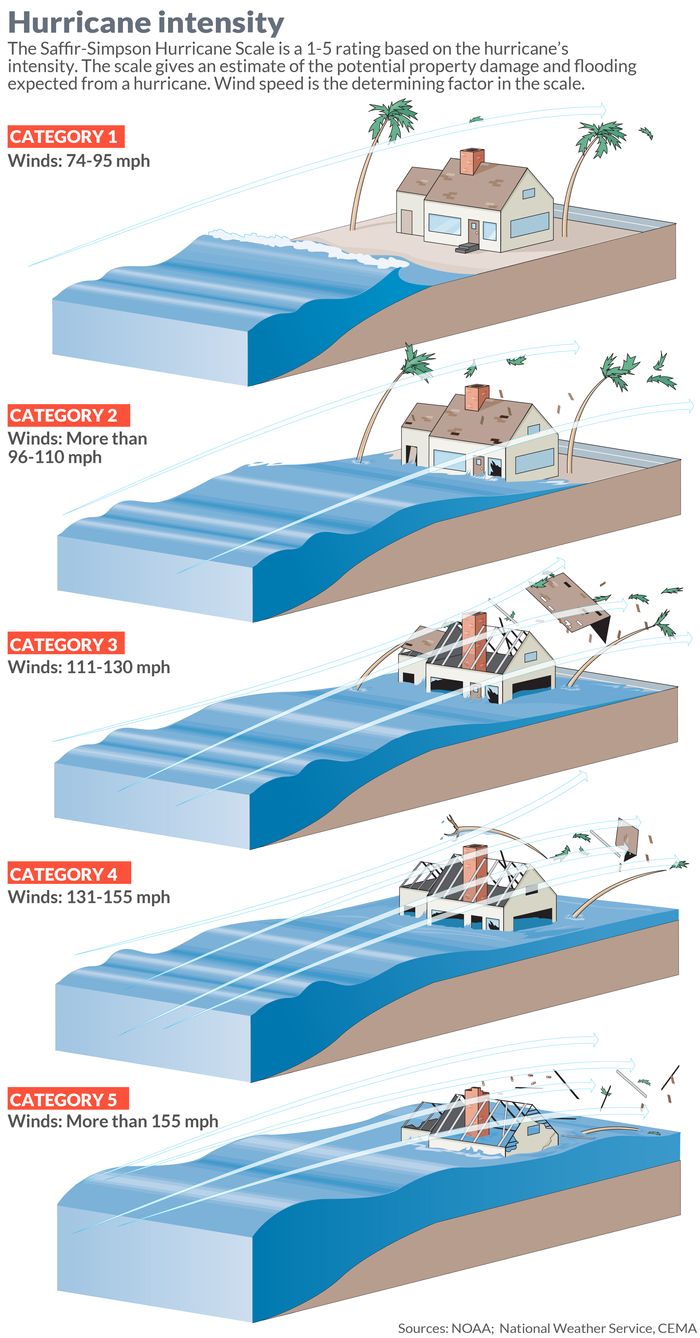Some 2 million people in Florida were without power heading into the weekend after Hurricane Ian, which made landfall in the Sunshine State earlier this week ranked at the upper limits of Category 4, before heading for the Carolinas.
One of the strongest hurricanes to ever hit the United States brought catastrophic flooding around the region. Ian’s tropical-storm-force winds extended outward up to 415 miles (665 km), drenching much of Florida and the southeastern Atlantic coast.
Read the latest on Ian.
The U.S. uses the Saffir-Simpson Hurricane Wind Scale to assess the risks that come with these storms. It’s a 1 to 5 rating based only on a hurricane’s maximum sustained wind speed. But importantly, that means the scale does not take into account other potentially deadly hazards such as storm surge, rainfall flooding, and tornadoes, as the National Hurricane Center explains.

Terrence Horan for MarketWatch
The Saffir-Simpson scale estimates potential property damage. “While all hurricanes produce life-threatening winds, hurricanes rated Category 3 and higher are known as major hurricanes,” the hurricane center says.
For Category 5 storms specifically, a high percentage of framed homes will be destroyed, with total roof failure and wall collapse. Fallen trees and power poles will isolate residential areas, the government agency warns. Power outages will last for weeks to possibly months.
Hurricane Katrina, in 2005, was a Category 5 hurricane, as were 2017’s Irma and Maria. See a full list of Cat 5 storms.
Read: Late-hitting Ian keeps expensive and high-risk hurricane season on track, fueled by climate change
Major hurricanes can cause devastating to catastrophic wind damage and significant loss of life simply due to the strength of their winds. But even lower-ranked hurricanes should not be easily dismissed. Hurricanes of all categories can produce deadly storm surge, rain-induced floods and tornadoes.
More than 2.5 million people were under mandatory evacuation orders in Florida, but by law no one could be forced to flee. Gov. Ron DeSantis said the state has 30,000 linemen, urban search and rescue teams and 7,000 National Guard troops from Florida and elsewhere ready to help once the weather clears.
MarketWatch’s Terrence Horan contributed. The Associated Press contributed.
